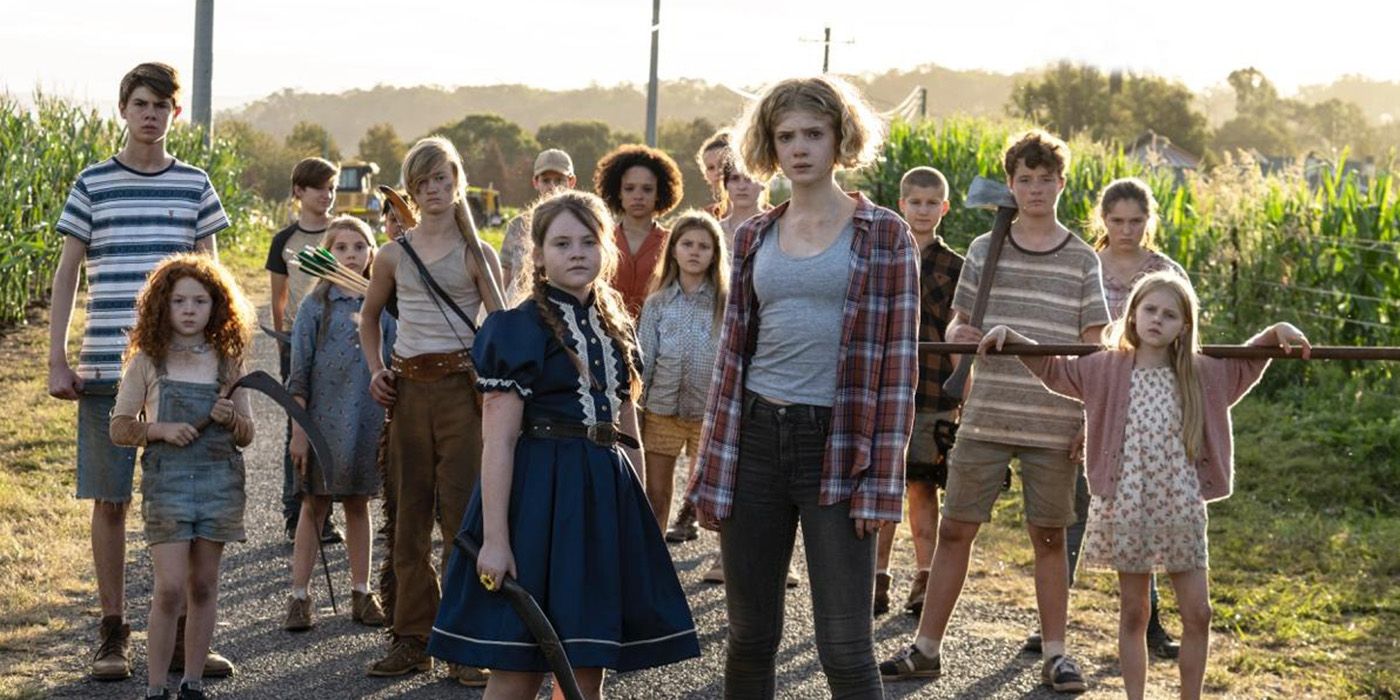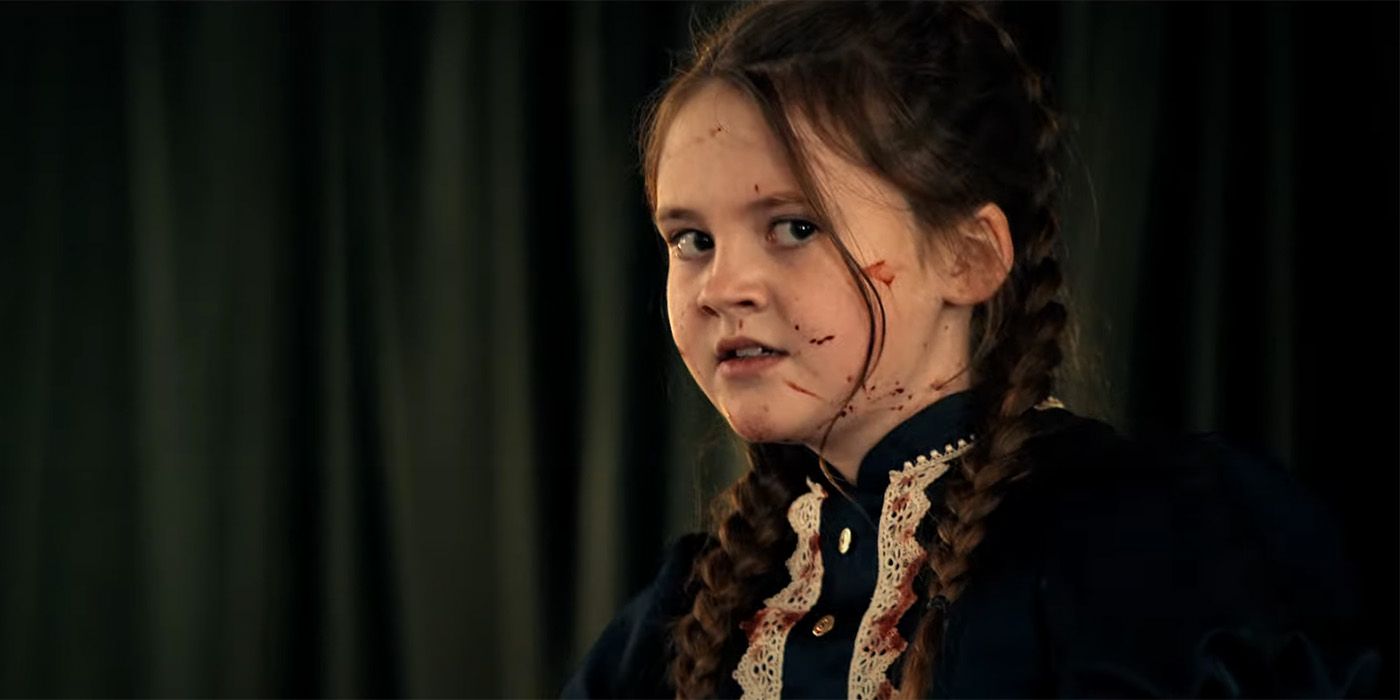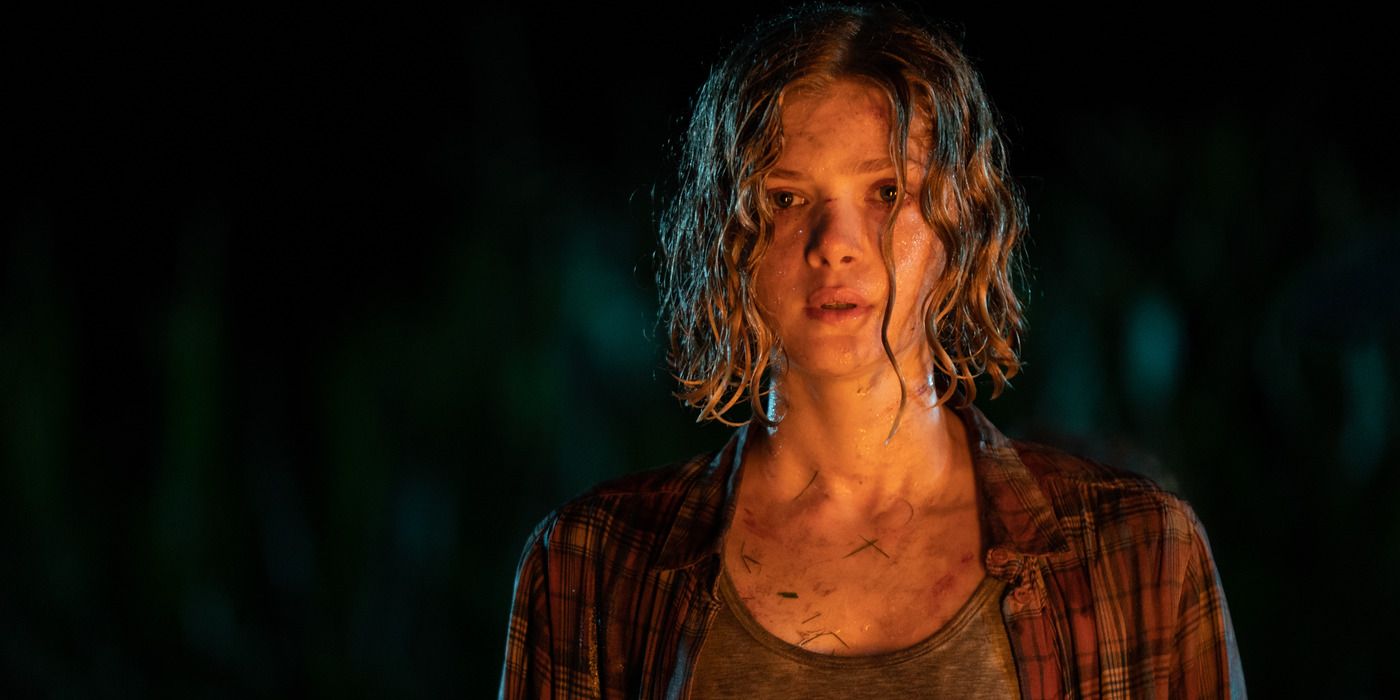While Children of the Corn is not the most critically-acclaimed work by master of horror Stephen King, the short story is arguably his most successful Hollywood property, at least regarding the sheer number of film adaptations. The story was first adapted into 1983’s short film Disciples of the Crow before becoming the cult-classic 1984 hit Children of the Corn, which spawned a franchise that features ten movies. The new Children of the Corn, the eleventh feature adaptation of King’s story, is well aware the short story has been squeezed dry creatively and decides to take things into a new direction by both serving as a prequel and pushing the mythos of He Who Walks Behind the Rows into a brand-new direction. Unfortunately, as well-intentioned as the new Children of the Corn might be, it misses the mark by mixing a confusing ecological message with bland scares, forgetting what makes King’s story so enticing in the first place.
Instead of taking place in Gatlin, the fictional Nebraska rural town where children perform human sacrifices to please an ancient divinity, the new Children of the Corn is set in Rylstone. This supposedly neighboring community is also located in Nebraska, the town’s economy is based on corn production, and some children have heard voices when walking on the green sea of leaves and cobs that extends as far as the eye can see. However, while the children uprising in Gatlin is suggested to be caused by religious fervor, things are put in motion in Rylstone because the lands have been contaminated by toxic pesticides that leave the soil barren.
It’s easy to understand why the new Children of the Corn takes a detour to adapt King’s story. Nowadays, people are more concerned about environmental impact than religious zealots. This makes it almost commendable that the prequel chooses to reimagine a horror story connected to rural landscapes, and makes it about the generational conflict between pragmatic adults that want to make money by exploiting the lands, and the children concerned with the future of the planet.
Nevertheless, good intentions don’t make good movies, and Children of the Corn ends up sending the opposite message than it promises in its first minutes. After all, the children are the villains of the Children of the Corn, and their eagerness to make a difference spreads death and destruction in their wake. So much so that the movie is forced to question—in a very literal way—if the hopes of the young to build a better world don’t actually make everything worse than it is. There’s something odd about a movie that seems concerned about environmental impacts and ends up preaching against the desire of younger generations to improve humanity’s relationship with nature. But the most significant thematic loss in Children of the Corn comes from the representation of He Who Walks Behind the Rows.
King’s original story is a cautionary tale about the extremes of religion and the dangers of molding young minds with moral tales that are unquestionably violent. The town of Gatlin was exceedingly religious before the arrival of He Who Walks Behind the Rows, and this corn divinity can only gather a following of children because it takes the place of something that was already there. It’s no wonder Gatlin’s children still go to church, even after having ripped out the New Testament from their Bibles. In King’s story, He Who Walks is a godlike creature that preys on innocent minds, twisting flexible minds that were raised with tales of a vengeful god. The story is so scary because we are left to wonder how easily an evil entity could take the place of a loving god by using the same scriptures that are sacred to so many people.
By completely dropping the religious background that originally led to the rise of He Who Walks Behind the Rows, the new Children of the Corn also makes the creature less scary. Instead of an unstoppable divinity, He Who Walks is now a creature that’s been personally affected by the degradation of the soil and who can exert some psychic influence on children. The original He Who Walks is an unstoppable entity. The new one is a material monster against who we can actually fight, and the children are just pawns in his game since they don’t act moved by belief. This change deeply harms the new Children of the Corn as it strips the original mythos from the things that make it so scary and memorable.
Children of the Corn tries to adapt King’s story to new sensibilities and fails. But what’s worse is that the movie never escapes the pacing of an average horror movie. No surprises are waiting for fans daring to walk on the new corn fields, and even the gore is made less effective by the overuse of digital effects. The characters, in general, are also reduced to single personality traits and will stick with a one-dimensional response to the chaos around them for the entire duration of the movie. So, while the Children of the Corn franchise is full of subpar entries, the new feature still has trouble leaving a lasting impression.
Still, if there is one reason to recommend the movie, which is Kate Moyer’s Eden, who serves as the prequel’s prophet and spreads the words of He Who Walks, turning the anguish and rage of the younger generations into a weapon. While the character is written to be your classic evil child, Moyer is obviously having lots of fun playing Eden and manages to imbue the character with devilish entertaining energy. Moyer’s acting might not be enough to save Children of the Corn, but it unquestionably elevates the experience. So, fans who feel the urge to watch every new franchise installment have at least that to look forward to.
Rating: D
Children of the Corn comes to theaters on March 3.



